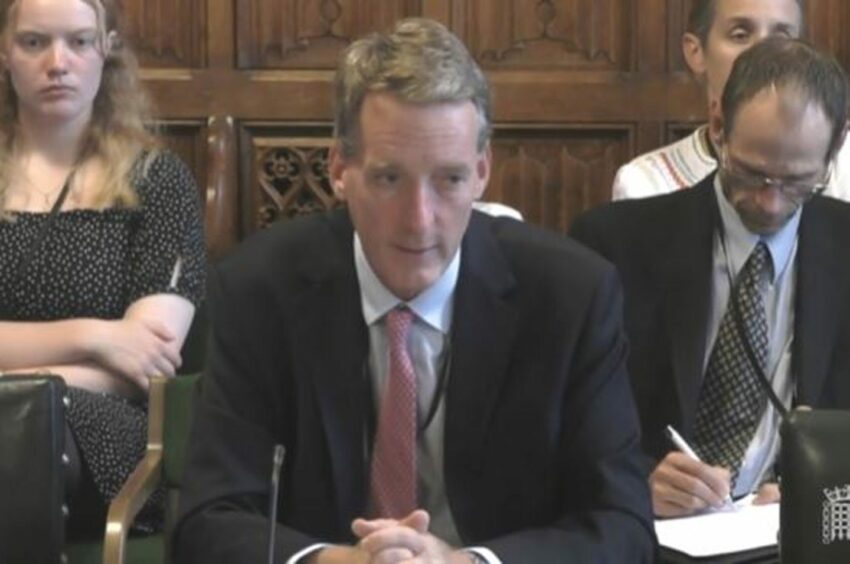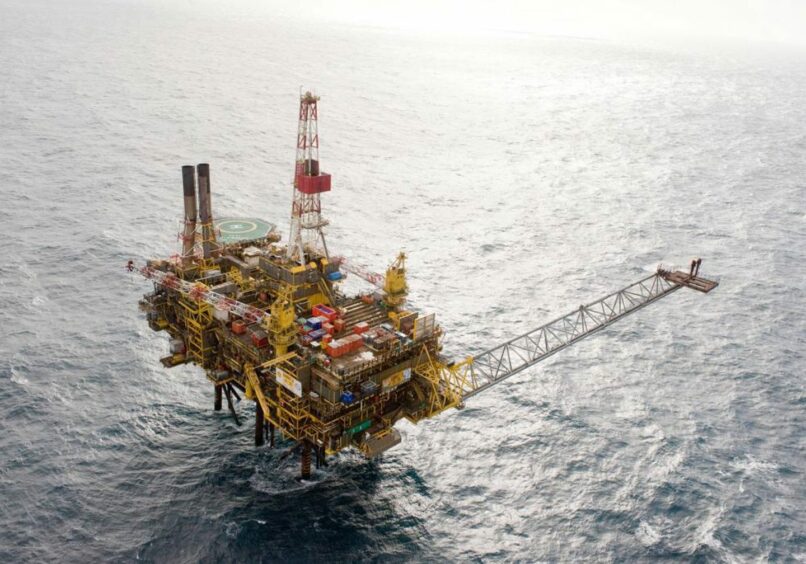
The head of the UK’s offshore regulator said he would “name and shame” North Sea operators who are not making sufficient progress on emissions reduction.
Answering questions during an Environmental Audit Committee panel hearing at Westminster on Wednesday, North Sea Transition Authority chief executive Andy Samuel said 79% of the 30 operators who make up the bulk of the UK’s production emissions were achieving reductions.
Asked by MP Jerome Mayhew whether the organisation would consider a “name and shame” policy for the roughly one-fifth of producers who were not making progress, Mr Samuel said: “Yes, I would.”
As part of the North Sea Transition Deal (NSTD) agreed with government last year, the sector has committed to a 50% reduction in emissions by 2030, and 90% by 2040, ahead of reaching net zero in 2050.
However, the NSTA has also said these goals are the minimum expected and that industry should strive to reduce emissions by 68% by 2030 (a figure endorsed by the Climate Change Committee).
The NTSA collects and publishes basin-wide data on North Sea emissions, including flaring and venting, but historically has not published data on individual operators or fields.
Instead, results are shared internally in a group session held between the regulator and company representatives. Mr Samuel said this was because the NSTA “wants to give operators a chance to share lessons and improve themselves.”
He also noted that there may also be specific reasons for yearly fluctuations by the same operator, such as maintenance or new drilling.
Asked why the organisation was resistant to naming laggards and to publishing the so-called “league table” of progress externally, he said the current process was working “better than expected”.
“We are working with four or five operators who show up in our benchmarks in a bad way… We want to give them a chance to correct that,” he explained.
Mr Samuel said he expected to see further progress from those outliers within “quarters, even months”, but confirmed he would be happy to name them if they had not shown sufficient progress in six months.
Electrifying discussions
He also suggested that the biggest point of contention within operators appears to be North Sea electrification.
“It’s fair to say there is a variable appetite on electrification,” he told the committee. “Some have publicly questioned the economics, others have said they will do it come what may, and that’s where we see the greatest variation.”
The organisation has previously vowed to ensure at least two projects are commissioned by 2027, though concedes it may not be the optimum solution for every asset.
Mr Samuel said the regulator is prepared to use its powers for those who are not moving in the right direction, and pointed to previous interventions in which an operator was shut down for a period after breaching consents.
2022 licensing round
The session also explored the regulator’s approach to its upcoming 33rd Licensing Round, the sector’s first since 2020, which will see it prioritise approvals by the speed of development.
“We were previously alternating mature and frontier areas in the same way as our colleagues in Norway have been doing for a number of years,” Mr Samuel told the committee.
“We stopped doing that as we don’t see the need to go into new frontiers – there’s not industry interest either, so this is very much back into the mature areas.”
He said the NSTA normally takes around three months to assess and approve applications, depending on the number received.
“What we’re going to do this time round, probably, is prioritise by tranche – the first being those which contain discoveries which could be brought on early, and work through on a prioritised fashion,” he continued.
Asked as to the timeline from approval to production, he said there would likely be a “spectrum” of projects, but that some have been licensed and developed with one year in the past.
“That is possible from some of the blocks we’re putting out because they contain existing discoveries,” he said. “Others, if it’s quite a distance from infrastructure, could be more like five to 10 years.”
It comes as industry looks to make the most of tax incentives issued under the government’s energy profits levy (EPL), and as new PM Liz Truss promises to “open up” the basin.
Recommended for you

 © Supplied by Shell
© Supplied by Shell